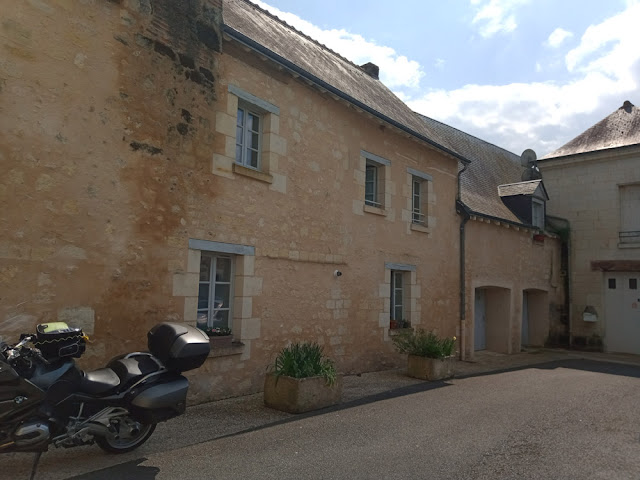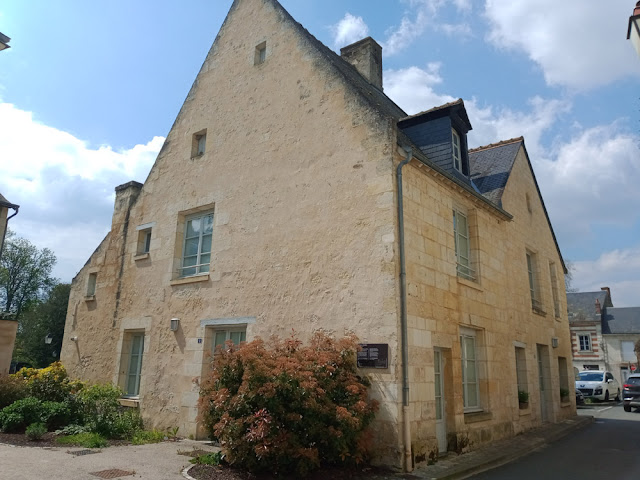 |
| The medieval bathhouse in Azay le Rideau. Note the very old brick chimney. |
Now a private home, the former public bathhouse in Azay-le-Rideau dates from the 15th century and was in use again in the 19th century when such celebrities as Auguste Rodin would visit it, with his muse Camille Claudel.
One of the popular misconceptions about the Middle Ages is that no one bathed, but this could not be further from the truth. The French saw themselves as the inheritors of the Roman Empire and so there were bathhouses everywhere and everyone at all social levels bathed regularly. It was understood that bathing kept you healthy.
Villagers and poor people bathed in the river whereas town folk got to luxuriate in steam and hot water baths. Every town had public baths (Paris had 26 at the end of the 13th century). Town criers were used to let the population know when the water was hot. Cold baths were considered to be good for health, but only hot baths and soap cleaned the body. Savon de Marseille appeared in the 14th century.
Medieval people loved to bath. It was a ritual full of comfort and pleasure. Babies were washed from top to toe in warm water several times a day until the 16th century. Medieval medical professionals were obsessed by infant hygiene and wrote extensively on the subject. Baby baths were made of wooden staves in an oval or circular shape, like half a barrel. And for adults baths were part of daily life in the 14th and 15th centuries.
Every quartier (district) in urban areas had a bathhouse, and it was easier for people to go the bathhouse than have bathing facilities with hot water set up in their own homes. The memory of the importance of the bathhouses in even the smallest towns lingers in the names of some streets even today.
Some couples, having feasted around a floating table in the large bath would then move on to one of the bedrooms. The bathhouses effectively doubled as brothels, although technically prostitutes were banned from them, and once the dust had settled after the Reformation, this was to be their downfall. Bathing ceased in the 17th and 18th centuries.
Bathhouses in the 14th and 15th centuries followed a similar style to Roman baths, with hot, warm and cold baths plus saunas. A sauna cost two deniers, a warm bath cost four deniers. If you wanted the full works it cost eight deniers, plus a denier for a towel. Two people bathing together could have the full works for twelve deniers. To give you an idea of the relative cost, a large loaf of bread at the time cost a denier.
Bathhouses were unisex, and as such were important meeting places, both in medieval times and once again when they were reinstated in the 19th century. Prices were set by the authorities and the bathhouse masters had to make sure all the pipes were in good condition, clean and evacuating waste water appropriately. It seems there was some understanding of the effect polluted water could have on the population. Likewise the unwell, particularly lepers, were banned from entering the baths.
It is obvious that people went to the baths to relax and to get clean. Medical opinion was very clear that bathing helped keep you healthy, although they stressed that cold baths were better than hot for maintaining health. Part of the reasoning behind this is that no one was tempted to stay too long in a cold bath -- just long enough to strengthen and stimulate their internal heat. But luckily, hot water bathing was encouraged for getting properly clean and you were encouraged to wash your skin, hair and mouth. Soap was made using oil or animal fat mixed with potash. If you didn't have access to soap you used Soapwort and made a foam.



No comments:
Post a Comment